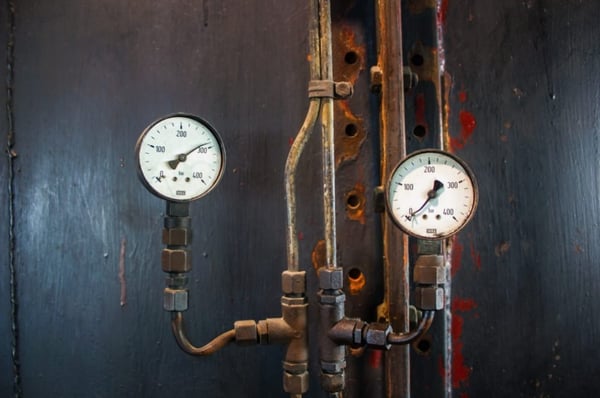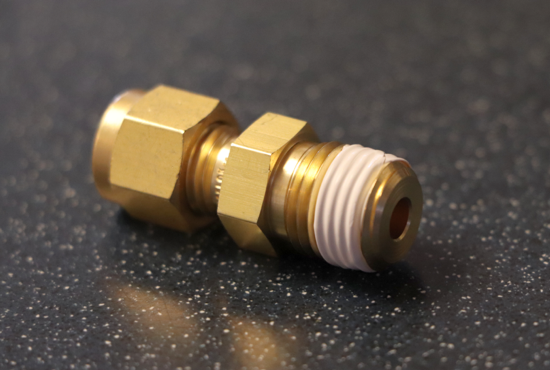For any pneumatic or hydraulic fluid system, pressure fittings are highly critical components. Fittings, also known as connectors or adapters, serve as standardized connections between pipes, tubes, hoses, valves, manifolds, and other components — and most systems have a large number of connections.
It is important that each fitting is able to handle the system media and pressure without leaking in order to achieve reliable operation. Although most professionals that work with fluid systems only need to be familiar with one or two types of fittings for their needs, some industries require knowledge of many different kinds.Unfortunately, the world of fittings can be overwhelming with so many competing standards and scattered knowledge, and trying to learn everything can quickly lead down a rabbit hole. This often results in a lot of confusion and wasted time trying to identify the right fitting or adapter for an application. The problem is further complicated by the fact each standard also carries a history behind it! This blog will serve as a roadmap for the most commonly used pressure fitting standards. The scope of this information does not include vacuum, flange, or quick-connect fittings.

Pressure Fitting Classification
Before we discuss specific fittings, it is important to define some important distinctions between them.
First, it helps to know that there are only a few ways to achieve reliable sealing for removable and reusable fittings. These primary sealing mechanisms are:
- Sealing at the threads, either metal-to-metal or with a sealant material
- Sealing by compressing a confined gasket or o-ring
- Sealing by compressing two metal-to-metal surfaces together, usually with a cone geometry
Second, different fittings are appropriate for different applications. Pipe threads are very convenient for water plumbing, but they are not ideal for use in systems that require frequent maintenance or repeated disconnections and reconnections. Likewise, high performance fittings are cost prohibitive for simple systems with low requirements. To bridge the gap, some fittings come in less expensive brass variants with the option to choose stainless steel to handle higher pressure. Low pressure fittings are usually made of brass, and high pressure fittings are almost always made of high quality stainless steel, and sometimes even special alloys.
Third, terms like “low pressure,” “medium pressure,” and “high pressure” are relative! They are not standardized terms and so are relative to industry, application, and even the manufacturer’s whim. A plumber would call 100 psi (~7 bar) high, whereas many hydraulic fittings manufacturers consider 20,000 psi to be “medium pressure” and 60,000 psi to be “high pressure,” even though most common fittings top out at 5,000-6,000 psi max working pressure.
Nomenclature of Pressure Fittings
One common source of frustration and confusion in dealing with fittings is how they are named, which makes it hard to connect the dots.
- Some fittings have no universally standard name and so each manufacturing company dubs it their own brand name, although they are usually interchangeable. Sometimes this even happens with fittings that do have a common name! Thankfully, it’s usually easy to identify these based on dimensions and images.
- Some commonly used fittings have more than one standard name, and many companies use one or the other name, but not both.
- Some manufacturers do not list the standards used for each type of fitting in an obvious place, or only give an incomplete list of all relevant standards.
Now that you’re aware of these pitfalls, it’s finally time to talk about specific fittings.

Common Pressure Fitting Standards
Maximum pressure rating for fittings is highly dependent on diameter and material, and the cited max pressures are the highest values from manufacturers that the fitting can support. For a particular fitting, consult the manufacturer’s specifications for use in design. System pressure is always limited by the weakest link in the chain; system pipes, hoses, tubes, or even manifolds are often the limiting factor. A male stainless steel fitting mated to a brass, aluminum, or low carbon steel component should never be overlooked.
The following is a list of popular fitting standards:
- National Pipe Taper (NPT)
- National Pipe Taper Fuel (NPTF)
- British Standard Pipe Taper (BSPT)
- British Standard Pipe Parallel (BSPP)
- SAE Straight Thread O-Ring Port/Boss (SAE ORB)
- SAE O-Ring Face Seal (SAE ORFS)
- SAE 45° Flare (SAE 45°)
- Joint Industry Council 37° Flare (JIC 37°)
- Japanese Industrial Standard 30° Flare (JIS 30°)
- Flareless 24° Bite-Type Tube (24° Tube)
- Tube Fitting
- High Pressure Compression Fitting
- Metric Thread
- UN/UNF Thread

Manufacturer-Specific Fittings
Most commonly used fittings are defined by national and professional standards rather than the intellectual property of specific companies. However, some manufacturers differentiate themselves by adding special features to them, or produce their own unique fitting designs to meet demanding application-specific needs. For example, Parker is known for its Parker Autoclave Engineers fittings including the “Quick Set” and “SpeedBite” products, which are rated up to 15,000 psi. Swagelok has a swaged cone tube fitting called “Sno-Trik” that features vent ports and is rated up to 60,000 psi. Hoke’s “Gyrolok” tube fitting front ferrules have a shoulder to provide extra sealing surfaces and to prevent over-tightening.
Most manufacturers stick with a select few fittings as standards in their products. At Mensor, we prefer SAE ORB fittings and double ferrule tube fittings for the majority of our instruments. However, other fittings can be easily adapted to your system requirements.
This information is intended to be a starting point in understanding the differences between the most commonly used pressure fittings. For a more detailed comparison, download the fittings guide, which includes common names, sealing type, max pressure and relevant standards.
Related Reading:
- What is Pressure? Definitions and Types Explained
- What is Bidirectional Pressure?
- What is Differential Pressure?
- What is Vacuum Pressure?
- Effects of Pressure: The Marshmallow Experiment
- What is Air Data?
Images courtesy of Wikimedia Commons.


